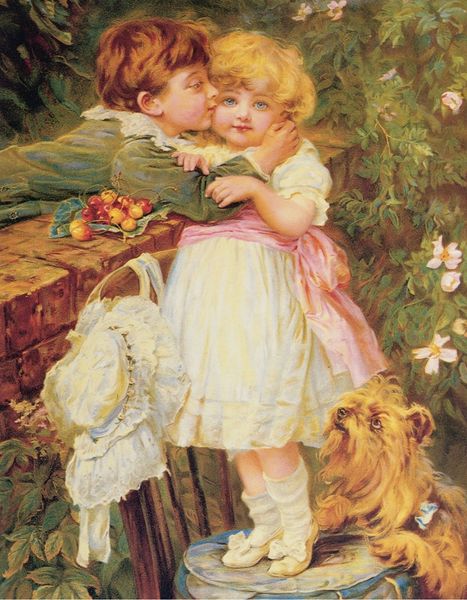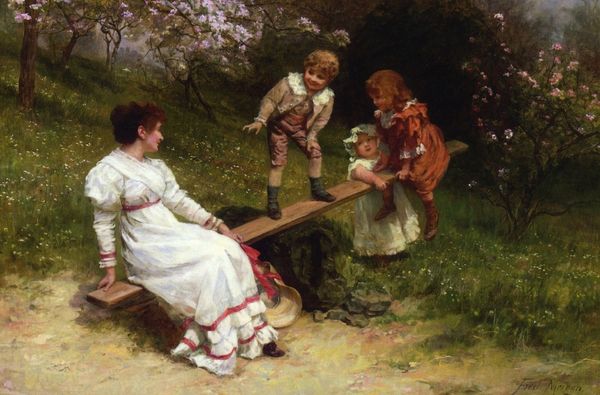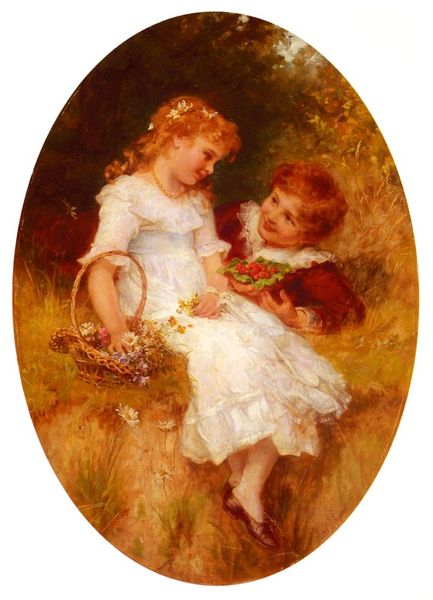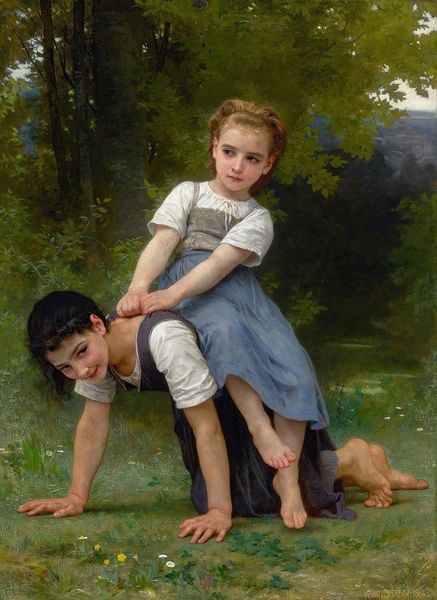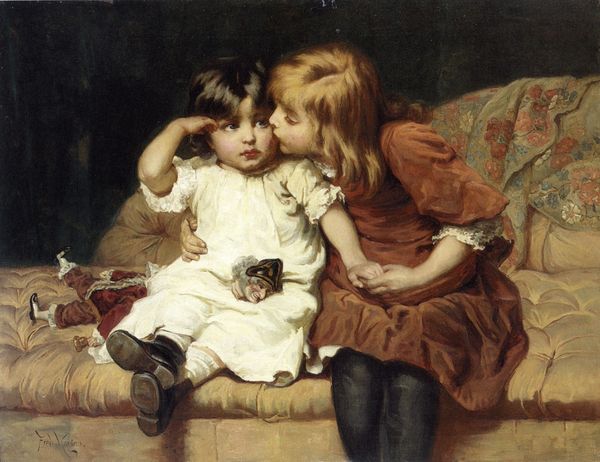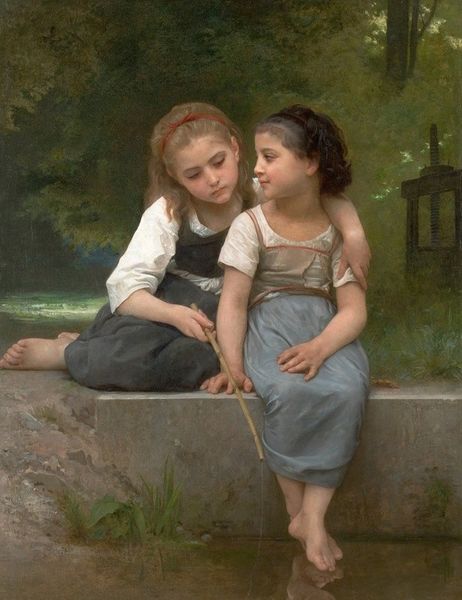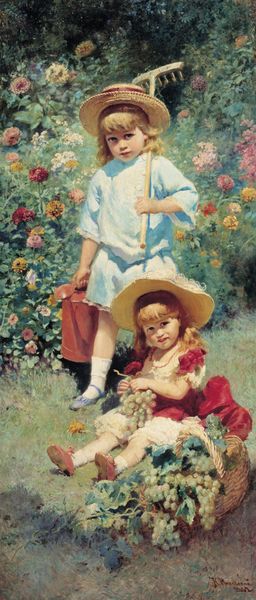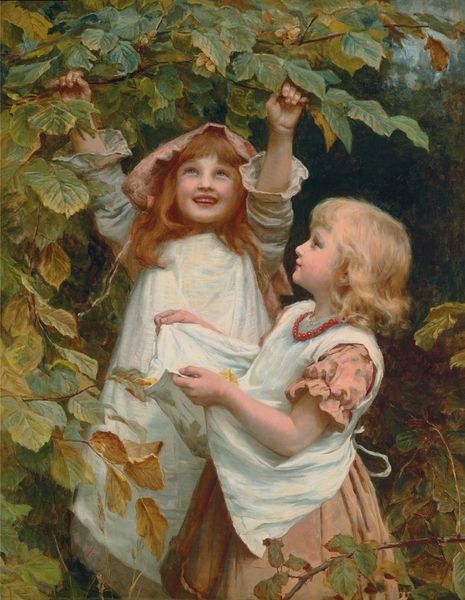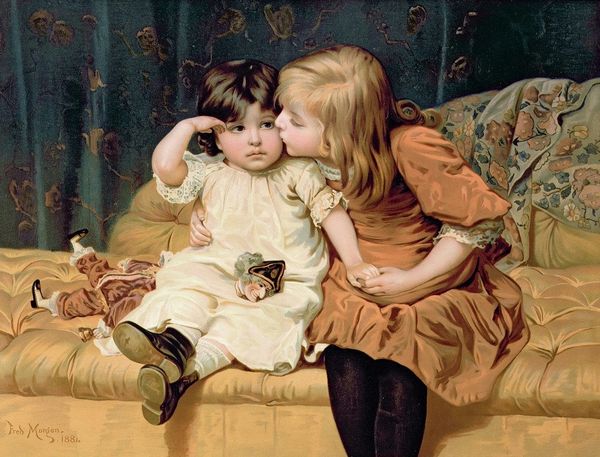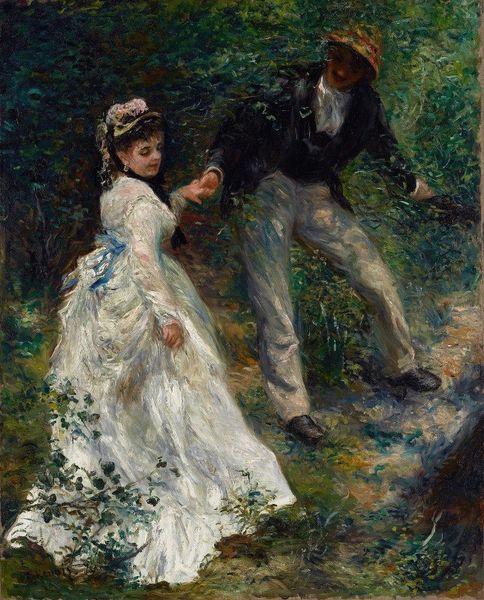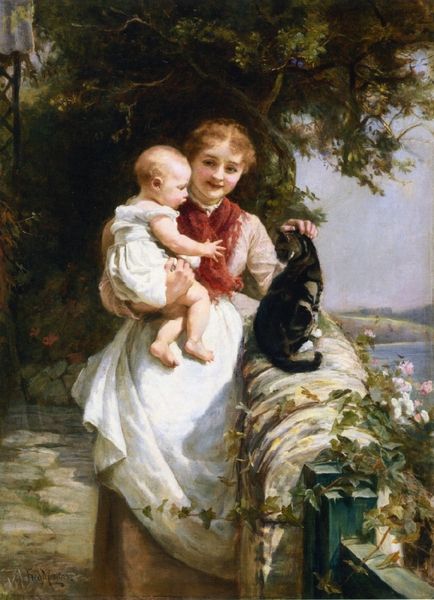
painting, plein-air, oil-paint, impasto
#
portrait
#
painting
#
plein-air
#
oil-paint
#
landscape
#
figuration
#
oil painting
#
impasto
#
child
#
group-portraits
#
romanticism
#
genre-painting
Copyright: Public domain
Art Historian: Oh, how delightful! At first glance, there’s such a tenderness about this work—a simple, childlike innocence captured beautifully. Art Historian: Indeed. This is Frederick Morgan’s painting titled "Sweethearts." Morgan, a British artist, gained prominence for his sentimental genre scenes featuring children. Although undated, this oil on canvas typifies the works he was producing that made him well known during his lifetime. Art Historian: The flower pinned to the little girl’s dress – a rose, it seems? – is more than just a detail; roses have carried a language of love and affection across cultures for centuries. It speaks to ideas of budding romance, innocent gestures of courtship. I wonder if this piece reinforces a nostalgic view of childhood itself. Art Historian: Certainly. Morgan's paintings resonated with the burgeoning middle class in Victorian England. The rosy-cheeked children, idyllic landscapes and carefully orchestrated scenes of domesticity offered an escape. What he shows here aligns neatly with the era’s evolving, idealized conceptions of children as innocent, uncorrupted beings. Art Historian: It’s fascinating how these images imprint themselves onto our cultural memory. This particular visual vocabulary — children, roses, sunny landscapes — gets continuously recycled through different forms over time to signify themes such as nostalgia, purity, or simple joy. There’s almost a symbolic echo effect in our minds. Art Historian: And those symbols become incredibly potent, shaping the political landscape of imagery. Morgan's idealized visions deliberately omitted the harsher realities of Victorian childhood — child labour, poverty. By displaying such works in public, galleries promoted this sentimentalised view of society while sidestepping any call to action. It’s all very strategic. Art Historian: Absolutely. The placement, then, is so powerful. When an image like this becomes ingrained into the collective unconscious it influences us. Art Historian: And in our own viewing experience. Looking at this work reminds us of just how much institutions affect how we think about childhood—something not nearly as ‘sweet’ as portrayed here.
Comments
No comments
Be the first to comment and join the conversation on the ultimate creative platform.

